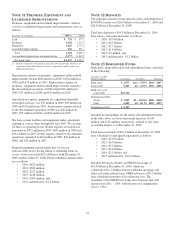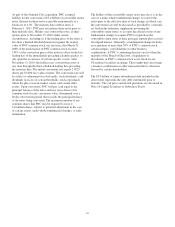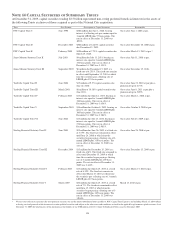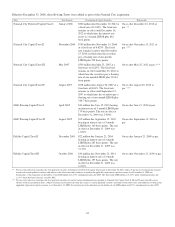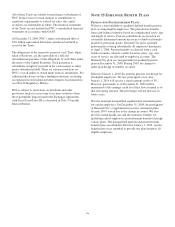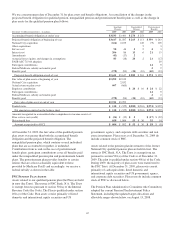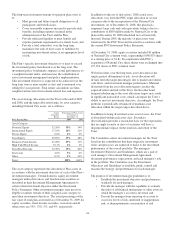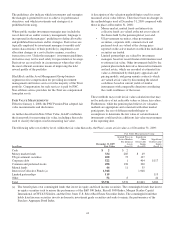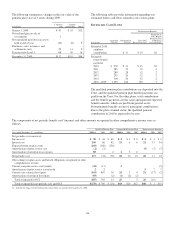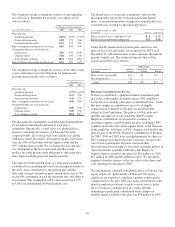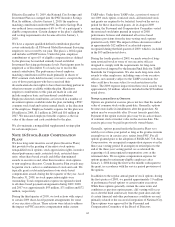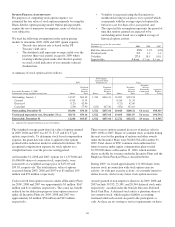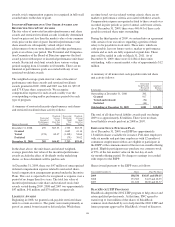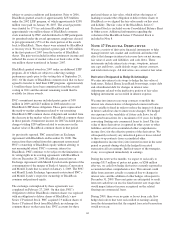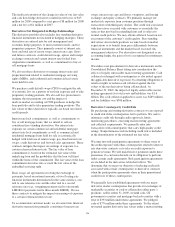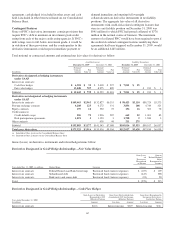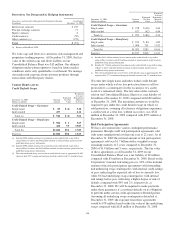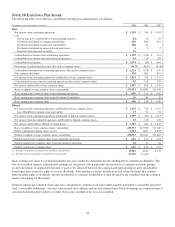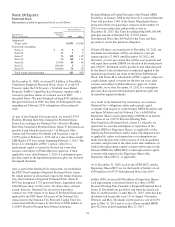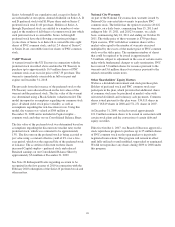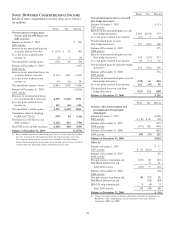PNC Bank 2009 Annual Report Download - page 146
Download and view the complete annual report
Please find page 146 of the 2009 PNC Bank annual report below. You can navigate through the pages in the report by either clicking on the pages listed below, or by using the keyword search tool below to find specific information within the annual report.Effective December 31, 2009, the National City Savings and
Investment Plan was merged into the PNC Incentive Savings
Plan. In addition, effective January 1, 2010, the employer
matching contribution under the PNC Incentive Savings Plan
was reduced from a maximum of 6% to 4% of a participant’s
eligible compensation. Certain changes to the plan’s eligibility
and vesting requirements also became effective January 1,
2010.
We have a separate qualified defined contribution plan that
covers substantially all US-based Global Investment Servicing
employees not covered by our plan. The plan is a 401(k) plan
and includes an ESOP feature. Under this plan, employee
contributions of up to 6% of eligible compensation as defined
by the plan may be matched annually based on Global
Investment Servicing performance levels. Participants must be
employed as of December 31 of each year to receive this
annual contribution. The performance-based employer
matching contribution will be made primarily in shares of
PNC common stock held in treasury or reserve, except in the
case of those participants who have exercised their
diversification election rights to have their matching portion in
other investments available within the plan. Mandatory
employer contributions to this plan are made in cash and
include employer basic and transitional contributions.
Employee-directed contributions are invested in a number of
investment options available under the plan, including a PNC
common stock fund and various mutual funds, at the direction
of the employee. Employee benefits expense for this plan was
$8 million in 2009, $11 million in 2008 and $10 million in
2007. We measured employee benefits expense as the fair
value of the shares and cash contributed to the plan.
We also maintain a nonqualified supplemental savings plan
for certain employees.
N
OTE
16 S
TOCK
-B
ASED
C
OMPENSATION
P
LANS
We have long-term incentive award plans (Incentive Plans)
that provide for the granting of incentive stock options,
nonqualified stock options, stock appreciation rights, incentive
shares/performance units, restricted stock, restricted share
units, other share-based awards and dollar-denominated
awards to executives and, other than incentive stock options,
to non-employee directors. Certain Incentive Plan awards may
be paid in stock, cash or a combination of stock and cash. We
typically grant a substantial portion of our stock-based
compensation awards during the first quarter of the year. As of
December 31, 2009, no stock appreciation rights were
outstanding. Total compensation expense recognized related
to all share-based payment arrangements during 2009, 2008
and 2007 was approximately $93 million, $71 million and $72
million, respectively.
During the third quarter of 2009, we took actions with respect
to certain 2009 share-based payment arrangements for some
of our executive officers. These actions were taken to address
the impact on PNC executive compensation under current
TARP rules. Under those TARP rules, a portion of some of
our 2009 stock option, restricted stock, and restricted stock
unit grants are required to be forfeited, based on the service
period for these share-based grants. At its August 2009
meeting, the Personnel and Compensation Committee vested
the restricted stock/units granted in respect of 2008
performance bonuses and eliminated all service-based
forfeiture provisions from the time-vesting stock options
granted in early 2009. The impact of these decisions resulted
in approximately $12 million of accelerated expense
recognized during the third quarter of 2009, which is included
in the $93 million noted above.
During the fourth quarter of 2009, we made awards of long-
term restricted stock to some of our executive officers
designed to comply with the requirements for long-term
restricted stock imposed by the Interim Final Rule for TARP
Standards for Compensation. We also made long-term stock
awards to other employees, including some of our executive
officers, not currently subject to the TARP restrictions but
who could have become subject to such restrictions in the
future. The 2009 expense impact from these stock awards was
approximately $9 million, which is included in the $93 million
noted above.
N
ONQUALIFIED
S
TOCK
O
PTIONS
Options are granted at exercise prices not less than the market
value of common stock on the grant date. Generally, options
become exercisable in installments after the grant date. No
option may be exercisable after 10 years from its grant date.
Payment of the option exercise price may be in cash or shares
of common stock at market value on the exercise date. The
exercise price may be paid in previously owned shares.
Generally, options granted under the Incentive Plans vest
ratably over a three-year period as long as the grantee remains
an employee or, in certain cases, retires from PNC. For all
options granted prior to the adoption of FASB ASC 718, Stock
Compensation, we recognized compensation expense over the
three-year vesting period. If an employee retired prior to the
end of the three-year vesting period, we accelerated the
expensing of all unrecognized compensation costs at the
retirement date. We recognize compensation expense for
options granted to retirement-eligible employees after
January 1, 2006 during the first twelve months subsequent to
the grant, in accordance with the service period provisions of
the options.
In addition to the regular annual grant of stock options, during
the first quarter of 2009, we granted approximately 1.9 million
of performance-based options to certain senior executives.
While these options generally contain the same terms and
conditions as previous option grants, cliff vesting will occur
on or after the third anniversary from the grant date and only
if certain financial and other performance conditions are met,
primarily related to the successful integration of National City.
These options were approved by the Personnel and
Compensation Committee of the Board of Directors.
142


